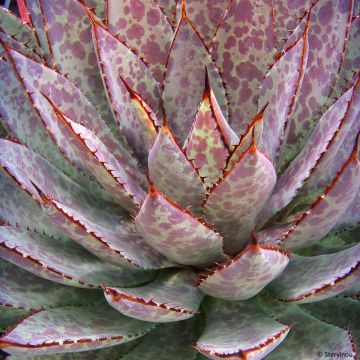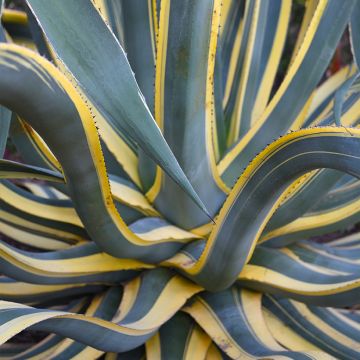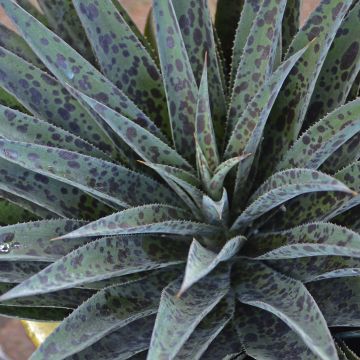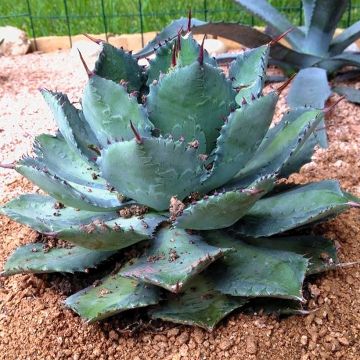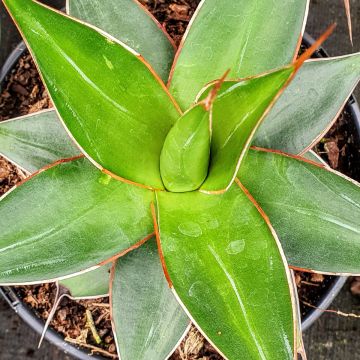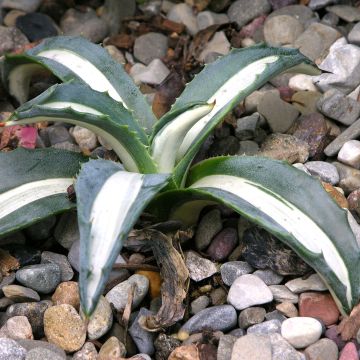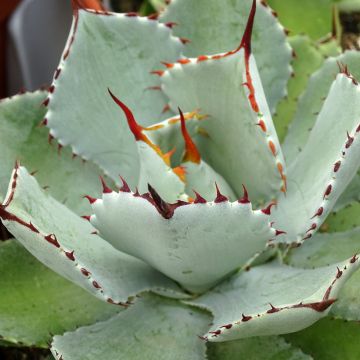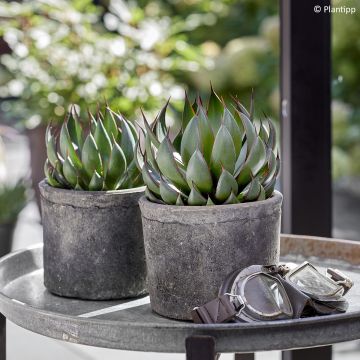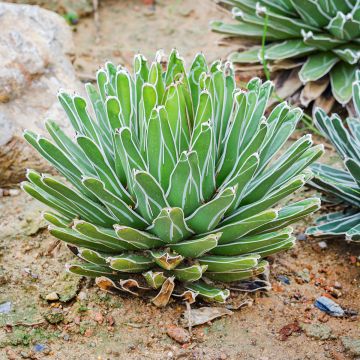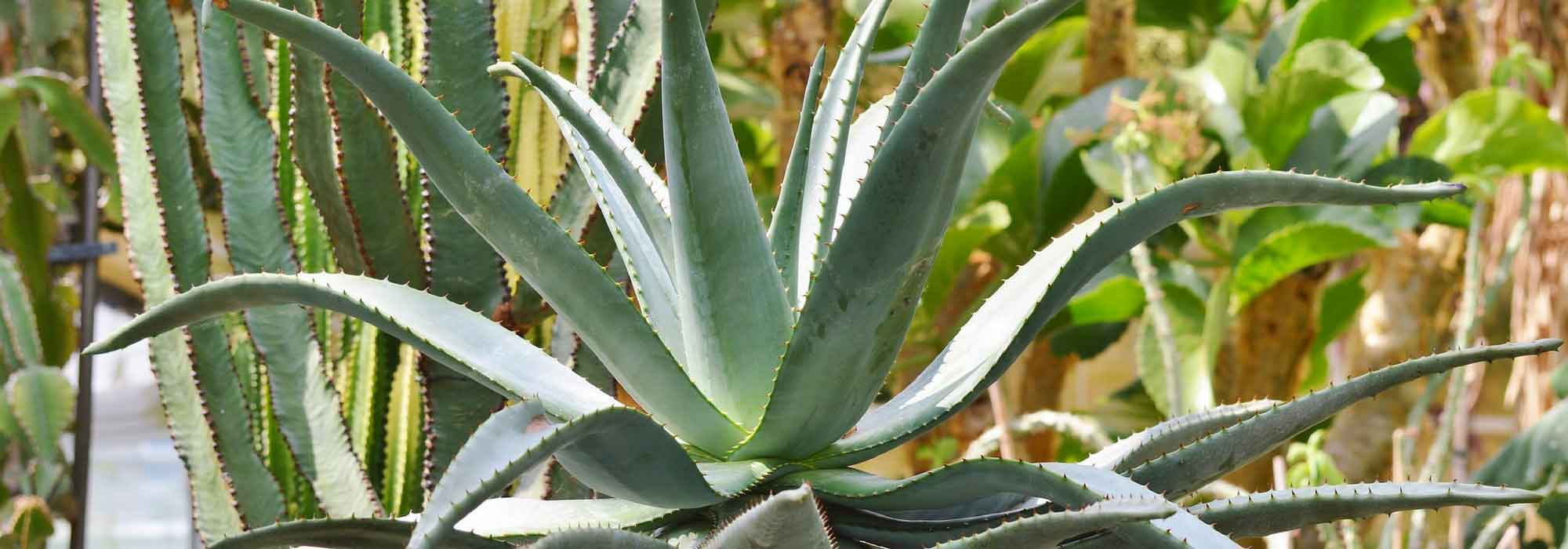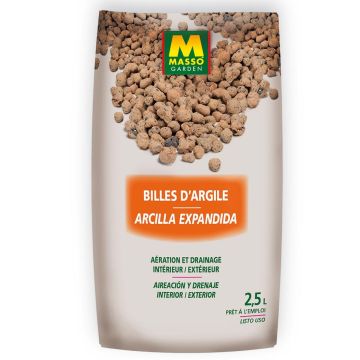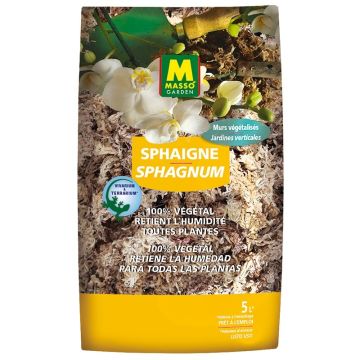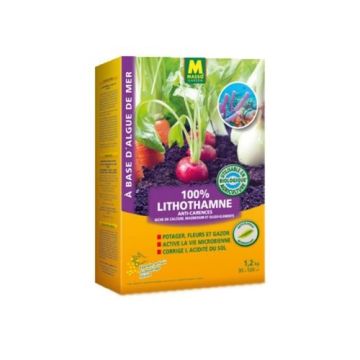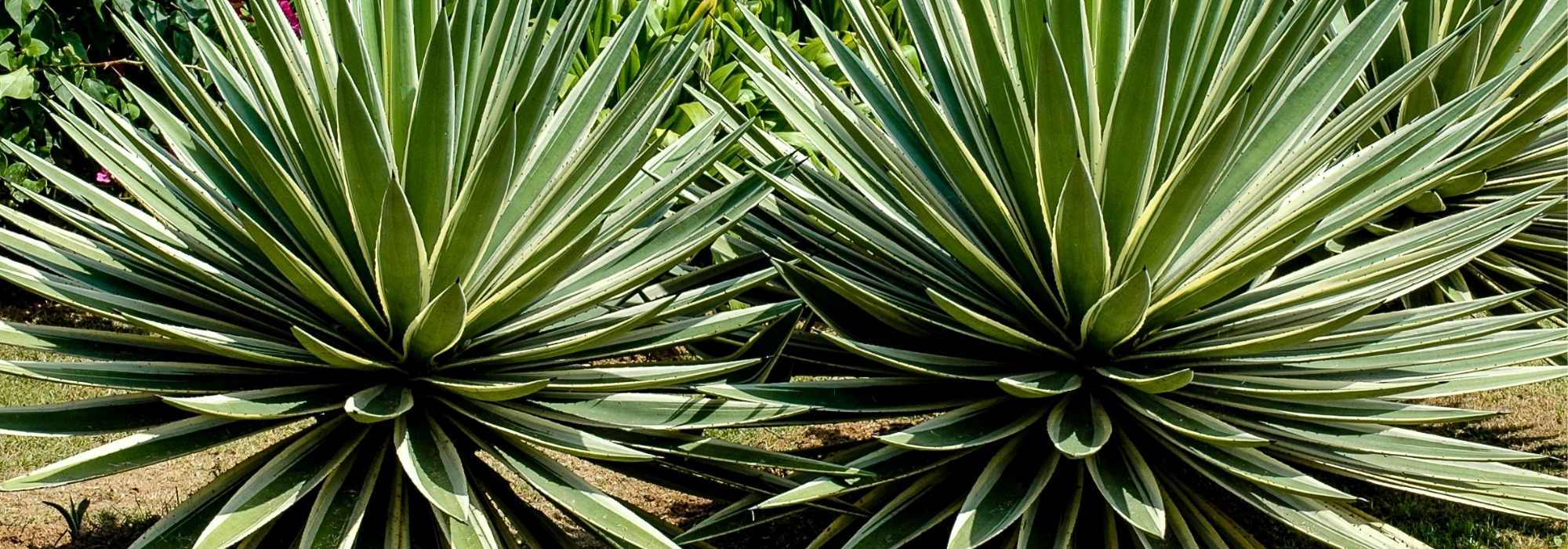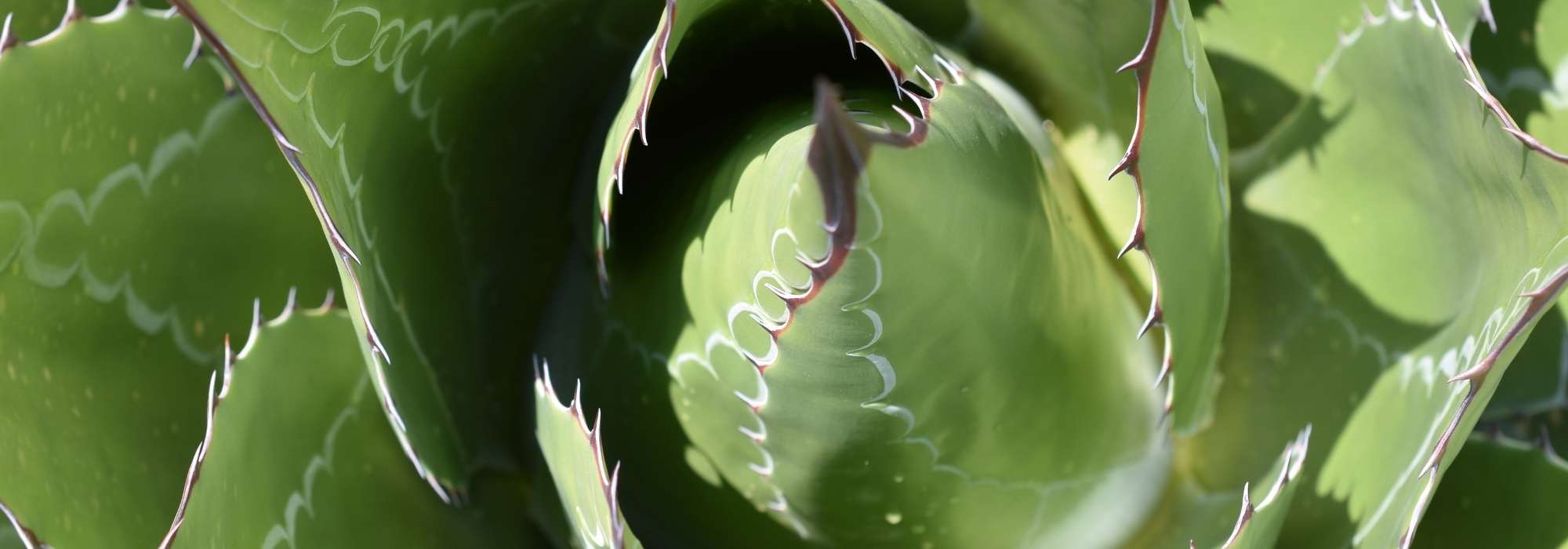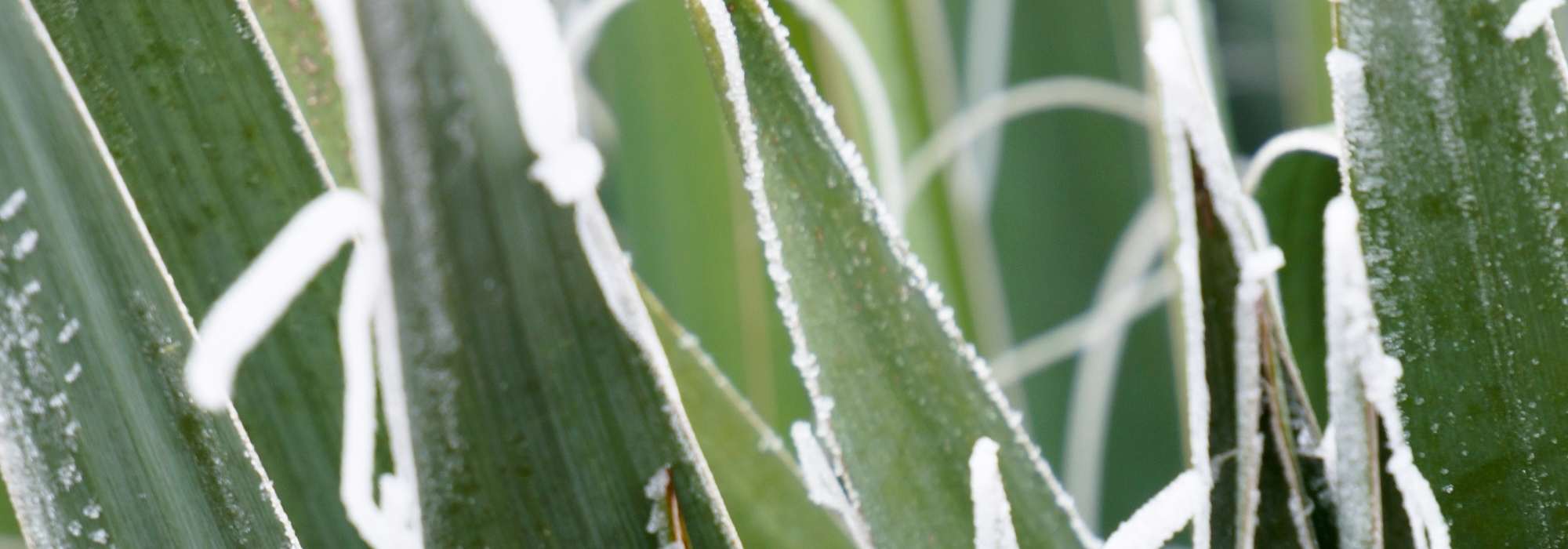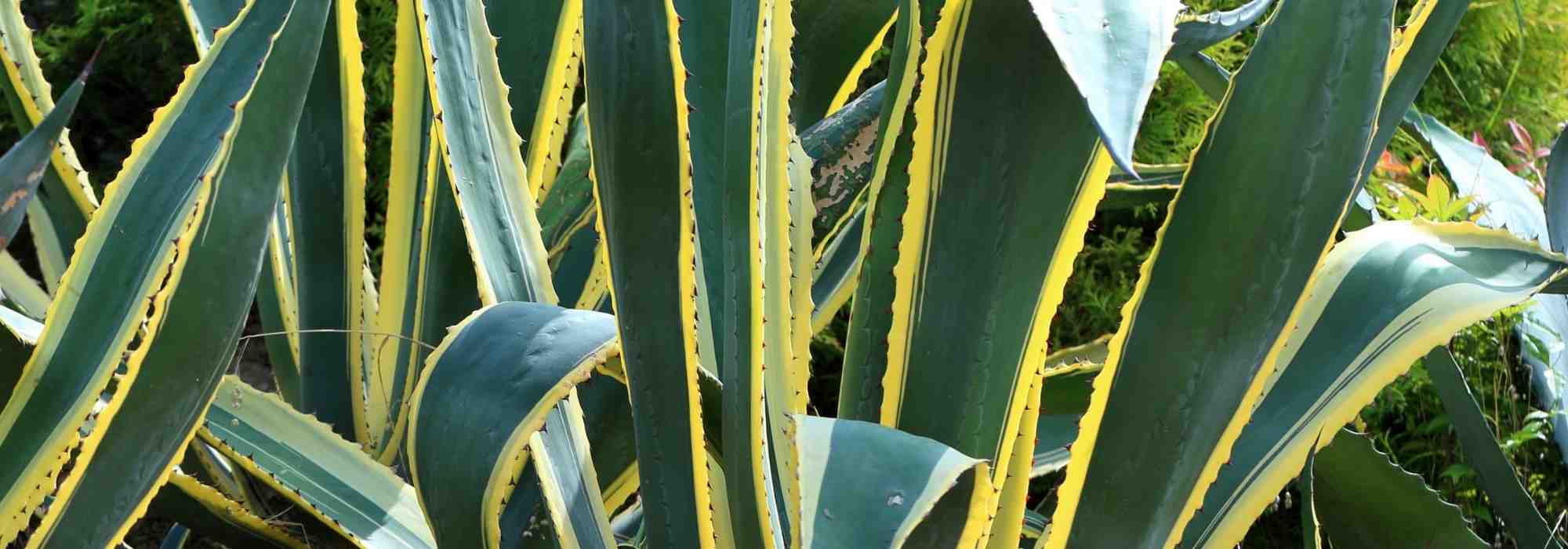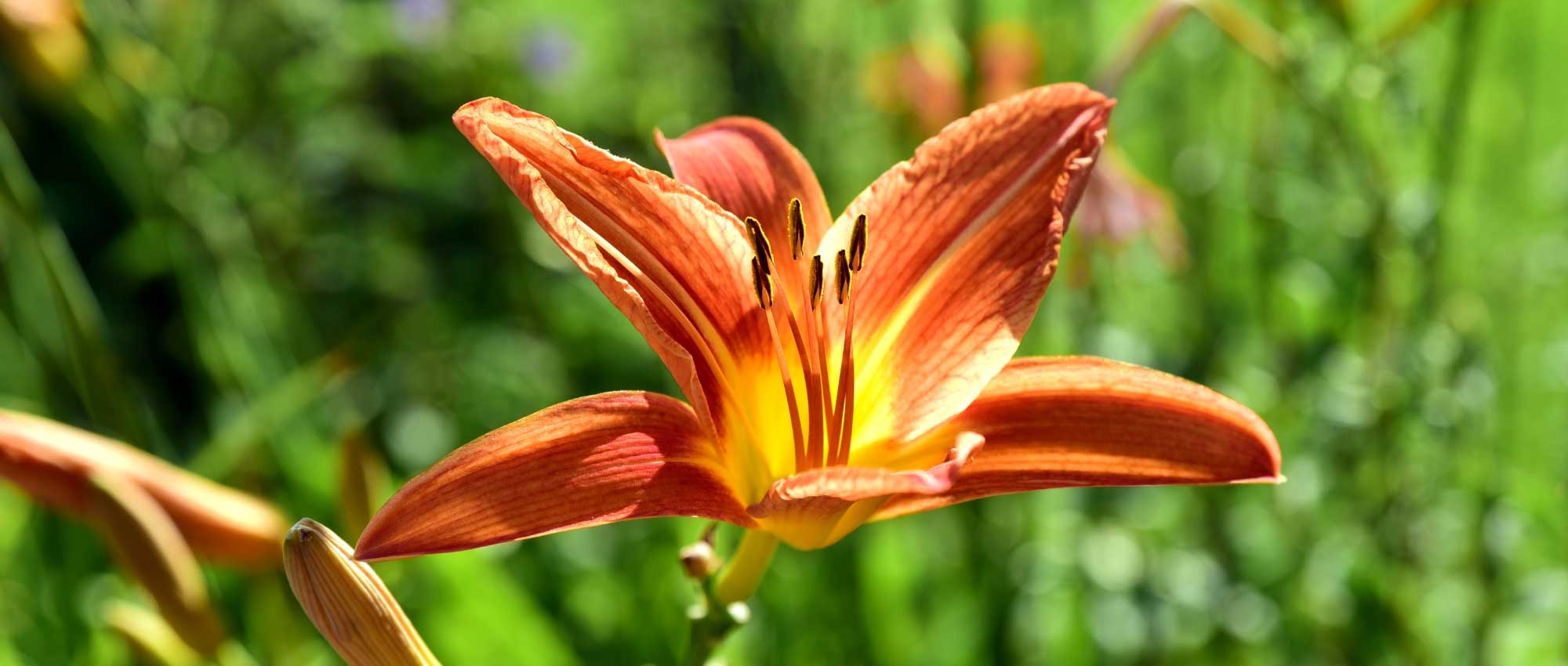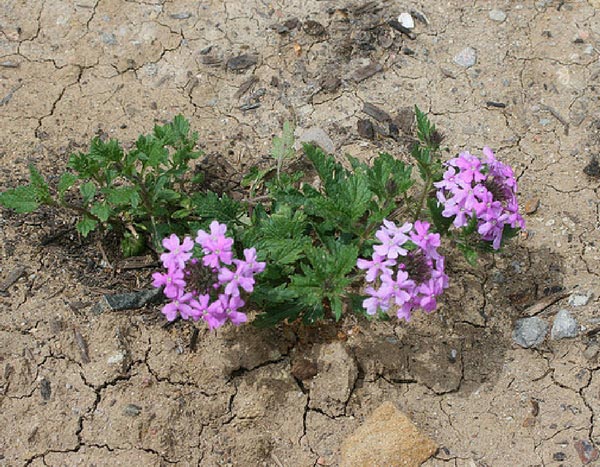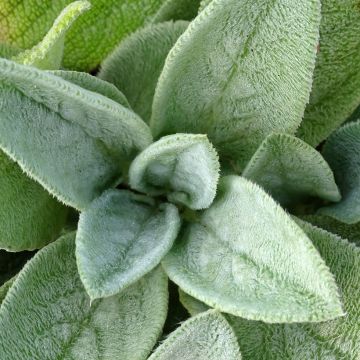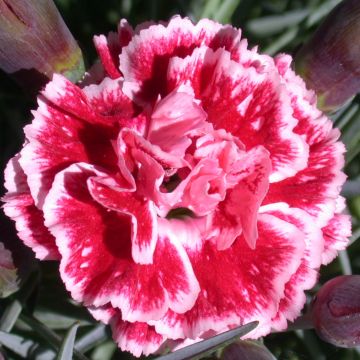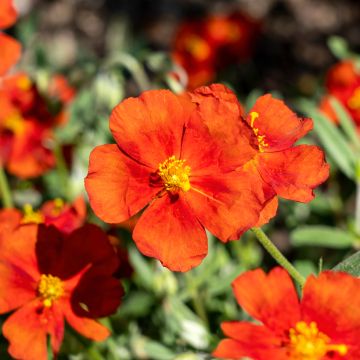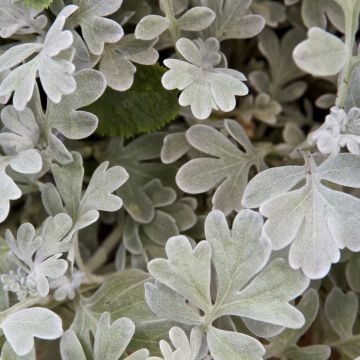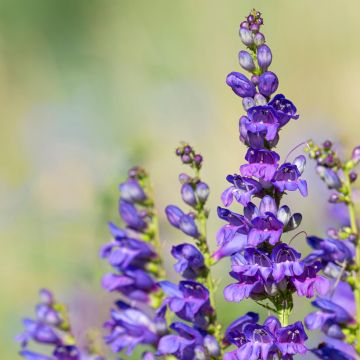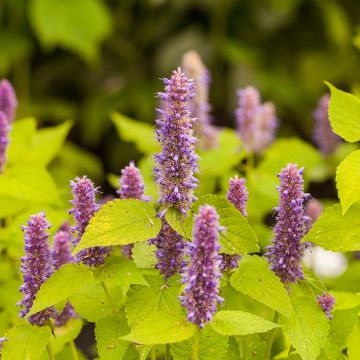

Agave salmiana subsp. crassispina
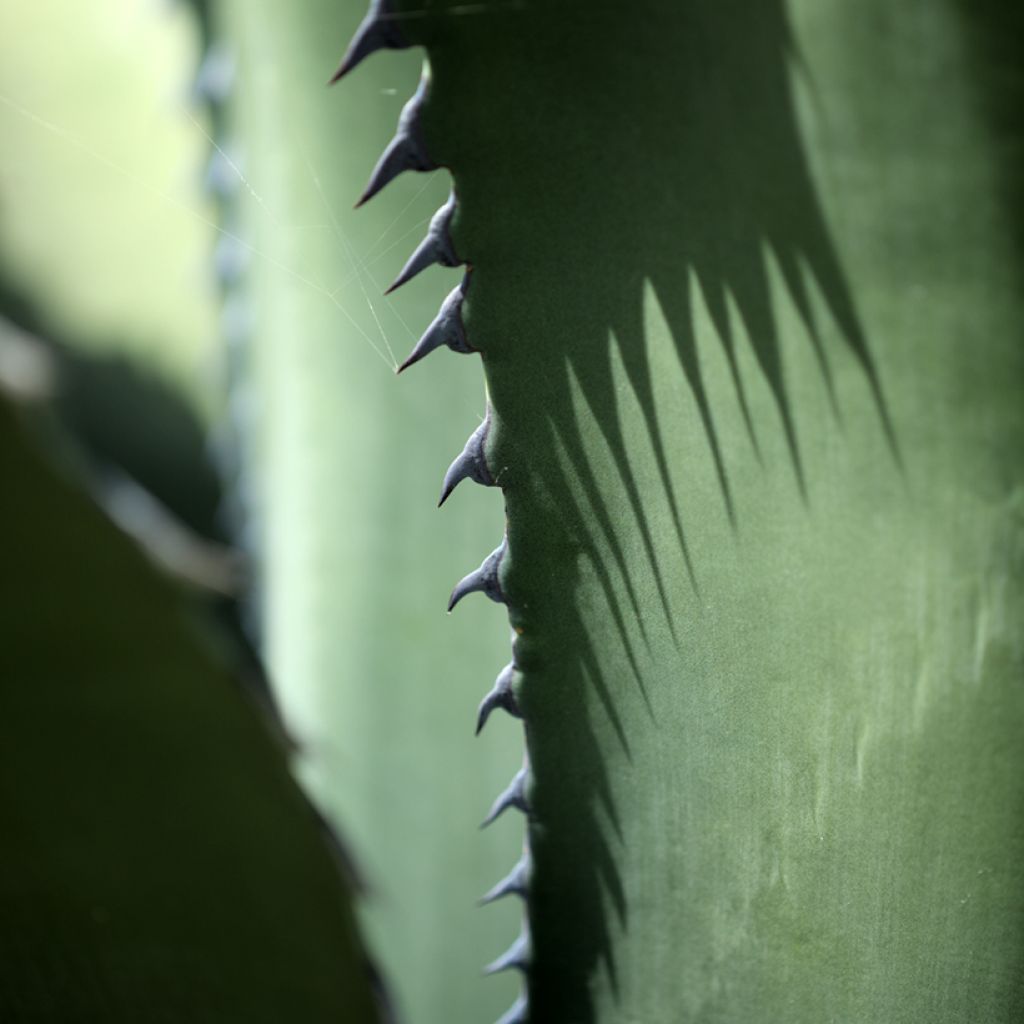

Agave salmiana subsp. crassispina
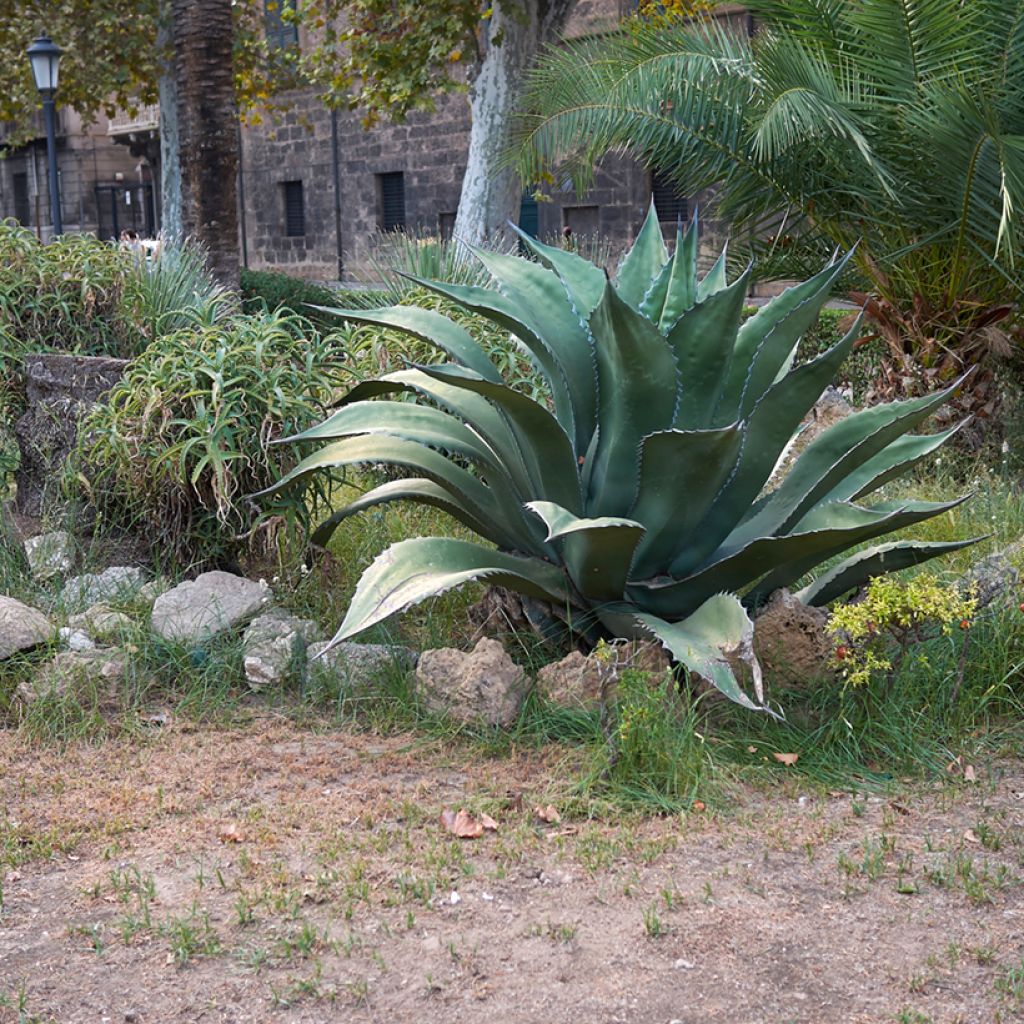

Agave salmiana subsp. crassispina
Agave salmiana subsp. crassispina
Agave salmiana subsp. crassispina
Giant Agave, Salmiana Agave, Pulque Agave
Special offer!
Receive a €20 voucher for any order over €90 (excluding delivery costs, credit notes, and plastic-free options)!
1- Add your favorite plants to your cart.
2- Once you have reached €90, confirm your order (you can even choose the delivery date!).
3- As soon as your order is shipped, you will receive an email containing your voucher code, valid for 3 months (90 days).
Your voucher is unique and can only be used once, for any order with a minimum value of €20, excluding delivery costs.
Can be combined with other current offers, non-divisible and non-refundable.
Why not try an alternative variety in stock?
View all →This plant carries a 12 months recovery warranty
More information
We guarantee the quality of our plants for a full growing cycle, and will replace at our expense any plant that fails to recover under normal climatic and planting conditions.
Would this plant suit my garden?
Set up your Plantfit profile →
Description
Agave salmiana subsp. crassispina is a succulent plant that forms a large rosette of broad, thick leaves edged with sharp thorns and adorned with an impressive terminal thorn. Its generous silhouette makes a striking feature in dry gardens, rockeries, or large containers. Drought and wind-resistant, it can tolerate temperatures down to -10°C in dry soil. This agave thrives in full sun, in poor, sandy, or rocky soil, and requires little maintenance, except for protection against excessive moisture in winter. Mature specimens only flower after 15 to 25 years, producing an impressive flowering spike, after which the rosette dies, leaving the offsets to grow in its place.
Agave salmiana subsp. crassispina belongs to the Asparagaceae family and is native to central Mexico, particularly the regions from Querétaro to Puebla. This subspecies differs from the typical A. salmiana by a higher concentration of carbohydrates, which may be an adaptation to the specific environmental conditions of its habitat. It also has a more compact habit, thicker and stiffer leaves, and a more pronounced terminal thorn. This Mexican agave forms a dense rosette of dark green to grey-green leaves, measuring up to 1.5 m in length. They are evergreen, thick and fleshy, with a triangular cross-section at the base, especially when young. They feature edges with a few thorns and end in a prominent apical thorn. At maturity, Agave salmiana subsp. crassispina can reach a height of 1.60 m and a spread of 2 m in the ground. In cultivation, its size may vary depending on conditions, but it generally retains imposing dimensions. When grown in pots, its size is more restrained, making it suitable for smaller spaces. This agave has a moderate growth rate, meaning it will take several years to reach its full size. It produces offsets for propagation. The flowering of this agave is a rare event that occurs after several decades. It is marked by a spectacular paniculate inflorescence that can reach several metres in height, composed of tubular flowers ranging from yellow to green. This flowering occurs in spring or summer, depending on the climate, and results in the death of the rosette, which is then replaced by its offsets.
Agave salmiana subsp. crassispina has a traditional use in Mexico for producing pulque, a fermented alcoholic beverage made from the sweet sap extracted from the plant. This practice dates back centuries and is an integral part of Mexican culture and history.
Suitable for Mediterranean climates and the warmer areas of the southwest, Agave salmiana subsp. crassispina is an excellent choice for an arid border or a large dry rockery. Pair it with other dry-soil plants such as Dasylirion and Yuccas, for example. Opuntias or prickly pears are also among these beautiful desert plants. Some, like Opuntia engelmannii var. lindhermeri, can withstand temperatures as low as -15°C!
Agave salmiana subsp. crassispina in pictures




Flowering
Foliage
Plant habit
Botanical data
Agave
salmiana subsp. crassispina
Asparagaceae
Giant Agave, Salmiana Agave, Pulque Agave
Agave crassispina, Agave crassispina var. cultra
North America
Planting and care
In Mediterranean regions, or the warmest areas of the Atlantic coast, plant Agave salmiana subsp. crassispina in full sun, in a scorching spot, on a slope or arid embankment, in preferably poor, very stony, chalky, sandy and well-drained soil. This plant can withstand brief frosts down to -10°C in dry soil, but it tolerates excess moisture less well, which is common in clay soils combined with severe cold. As it prefers dry soils in summer, in slightly humid climates, you could consider digging a 50 cm pit, filling it with a mix of stones and light soil, and planting the agave there, with its collar isolated from stagnant water. The ideal solution is planting on a slope, which allows water to drain well and not pool in the rosette. A generous but infrequent watering will suit it perfectly to help it establish in the first year. After that, it will manage perfectly well on its own.
This species should be grown in a very large pot given its mature size.
Planting period
Intended location
Care
Planting & care advice
This item has not been reviewed yet - be the first to leave a review about it.
Similar products
Haven't found what you were looking for?
Hardiness is the lowest winter temperature a plant can endure without suffering serious damage or even dying. However, hardiness is affected by location (a sheltered area, such as a patio), protection (winter cover) and soil type (hardiness is improved by well-drained soil).

Photo Sharing Terms & Conditions
In order to encourage gardeners to interact and share their experiences, Promesse de fleurs offers various media enabling content to be uploaded onto its Site - in particular via the ‘Photo sharing’ module.
The User agrees to refrain from:
- Posting any content that is illegal, prejudicial, insulting, racist, inciteful to hatred, revisionist, contrary to public decency, that infringes on privacy or on the privacy rights of third parties, in particular the publicity rights of persons and goods, intellectual property rights, or the right to privacy.
- Submitting content on behalf of a third party;
- Impersonate the identity of a third party and/or publish any personal information about a third party;
In general, the User undertakes to refrain from any unethical behaviour.
All Content (in particular text, comments, files, images, photos, videos, creative works, etc.), which may be subject to property or intellectual property rights, image or other private rights, shall remain the property of the User, subject to the limited rights granted by the terms of the licence granted by Promesse de fleurs as stated below. Users are at liberty to publish or not to publish such Content on the Site, notably via the ‘Photo Sharing’ facility, and accept that this Content shall be made public and freely accessible, notably on the Internet.
Users further acknowledge, undertake to have ,and guarantee that they hold all necessary rights and permissions to publish such material on the Site, in particular with regard to the legislation in force pertaining to any privacy, property, intellectual property, image, or contractual rights, or rights of any other nature. By publishing such Content on the Site, Users acknowledge accepting full liability as publishers of the Content within the meaning of the law, and grant Promesse de fleurs, free of charge, an inclusive, worldwide licence for the said Content for the entire duration of its publication, including all reproduction, representation, up/downloading, displaying, performing, transmission, and storage rights.
Users also grant permission for their name to be linked to the Content and accept that this link may not always be made available.
By engaging in posting material, Users consent to their Content becoming automatically accessible on the Internet, in particular on other sites and/or blogs and/or web pages of the Promesse de fleurs site, including in particular social pages and the Promesse de fleurs catalogue.
Users may secure the removal of entrusted content free of charge by issuing a simple request via our contact form.
The flowering period indicated on our website applies to countries and regions located in USDA zone 8 (France, the United Kingdom, Ireland, the Netherlands, etc.)
It will vary according to where you live:
- In zones 9 to 10 (Italy, Spain, Greece, etc.), flowering will occur about 2 to 4 weeks earlier.
- In zones 6 to 7 (Germany, Poland, Slovenia, and lower mountainous regions), flowering will be delayed by 2 to 3 weeks.
- In zone 5 (Central Europe, Scandinavia), blooming will be delayed by 3 to 5 weeks.
In temperate climates, pruning of spring-flowering shrubs (forsythia, spireas, etc.) should be done just after flowering.
Pruning of summer-flowering shrubs (Indian Lilac, Perovskia, etc.) can be done in winter or spring.
In cold regions as well as with frost-sensitive plants, avoid pruning too early when severe frosts may still occur.
The planting period indicated on our website applies to countries and regions located in USDA zone 8 (France, United Kingdom, Ireland, Netherlands).
It will vary according to where you live:
- In Mediterranean zones (Marseille, Madrid, Milan, etc.), autumn and winter are the best planting periods.
- In continental zones (Strasbourg, Munich, Vienna, etc.), delay planting by 2 to 3 weeks in spring and bring it forward by 2 to 4 weeks in autumn.
- In mountainous regions (the Alps, Pyrenees, Carpathians, etc.), it is best to plant in late spring (May-June) or late summer (August-September).
The harvesting period indicated on our website applies to countries and regions in USDA zone 8 (France, England, Ireland, the Netherlands).
In colder areas (Scandinavia, Poland, Austria...) fruit and vegetable harvests are likely to be delayed by 3-4 weeks.
In warmer areas (Italy, Spain, Greece, etc.), harvesting will probably take place earlier, depending on weather conditions.
The sowing periods indicated on our website apply to countries and regions within USDA Zone 8 (France, UK, Ireland, Netherlands).
In colder areas (Scandinavia, Poland, Austria...), delay any outdoor sowing by 3-4 weeks, or sow under glass.
In warmer climes (Italy, Spain, Greece, etc.), bring outdoor sowing forward by a few weeks.






























